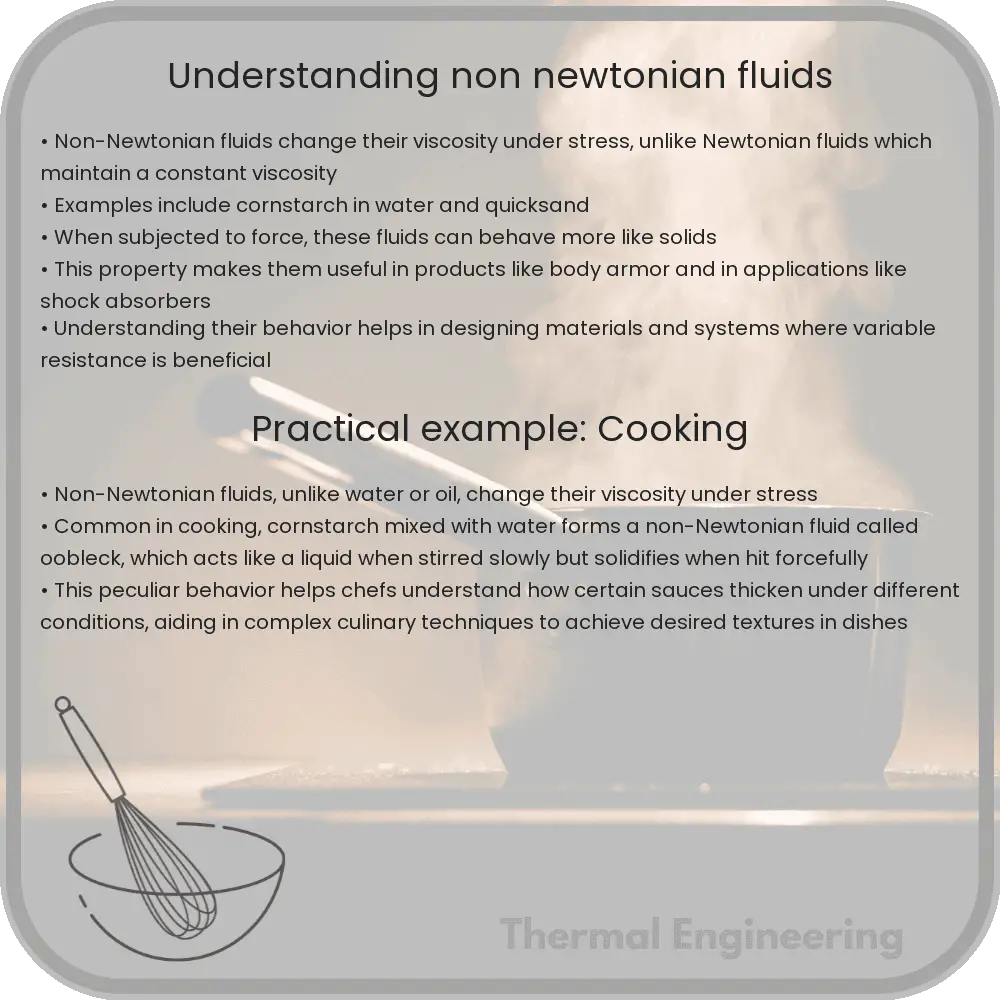Learn about non-Newtonian fluids, materials with viscosity that changes under stress, differing from standard fluids like water.

Understanding Non-Newtonian Fluids
Non-Newtonian fluids are fascinating materials that behave differently from typical fluids like water or air, which follow Newton’s law of viscosity. The viscosity of a fluid is essentially a measure of its resistance to gradual deformation by shear stress or tensile stress. In non-Newtonian fluids, the viscosity changes when under force to either more liquid or more solid. This distinctive characteristic makes them incredibly useful in various applications, from everyday products to industrial processes.
Types of Non-Newtonian Fluids
Non-Newtonian fluids can be classified into several types based on how their viscosity changes in response to stress:
- Shear-thickening (Dilatant) fluids: These fluids, such as cornstarch mixed with water, increase in viscosity or become more solid when agitated or stressed.
- Shear-thinning (Pseudoplastic) fluids: Such as ketchup or blood, these decrease in viscosity under shear stress and become more fluid-like. This is why ketchup becomes easier to pour when you shake the bottle.
- Thixotropic fluids: These materials take a finite time to attain a steady viscosity when the shear condition changes. For example, paint might feel thicker when initially stirred but becomes more fluid-like with continued stirring.
- Rheopectic fluids: Opposite to thixotropic fluids, these fluids become more viscous or thick over time under stress.
- Bingham plastics: Like toothpaste, these start to flow only after their yield stress, a specific stress threshold, has been exceeded.
These behaviors can be explained by different factors, including the composition of the fluid, the size and shape of particles within a fluid, and the interactions between the particles.
Mathematical Model
For Newtonian fluids, the viscosity (η) remains constant, described by the simple equation:
τ = η * γ
where τ is the shear stress and γ is the shear rate.
For non-Newtonian fluids, however, the relationship between shear stress and shear rate is not linear and can be expressed as:
τ = K * γn
- K is the consistency coefficient.
- n is the flow behavior index, where n < 1 for shear-thinning, n > 1 for shear-thickening, and n = 1 reverts to the Newtonian fluid behavior.
Applications
Non-Newtonian fluids have both practical and innovative applications across various fields:
- Consumer Products: Everyday items like toothpaste, lotions, and creams are easier to handle and apply due to their non-Newtonian properties.
- Industrial Processes: In industries, these fluids assist in processes where controlling the flow and spreadability is crucial—for instance, in food processing or the manufacture of sauces and dressings.
- Protective Gear: Shear-thickening fluids are used in some modern body armors where they remain flexible under normal conditions and become solid under high-impact forces, providing additional protection.
- Medical Applications: In the medical field, non-Newtonian gels are used in prosthetics and drug delivery systems where tailored flow properties can significantly improve performance and comfort.
In conclusion, non-Newtonian fluids challenge our traditional understanding of how liquids behave, opening up possibilities for innovative solutions in various industries. Their unique properties ensure they continue to be a subject of interest and innovation in both research and application.